Peru's José Luis Carballo finally gets the respect he deserves for creating a new way to play cumbia
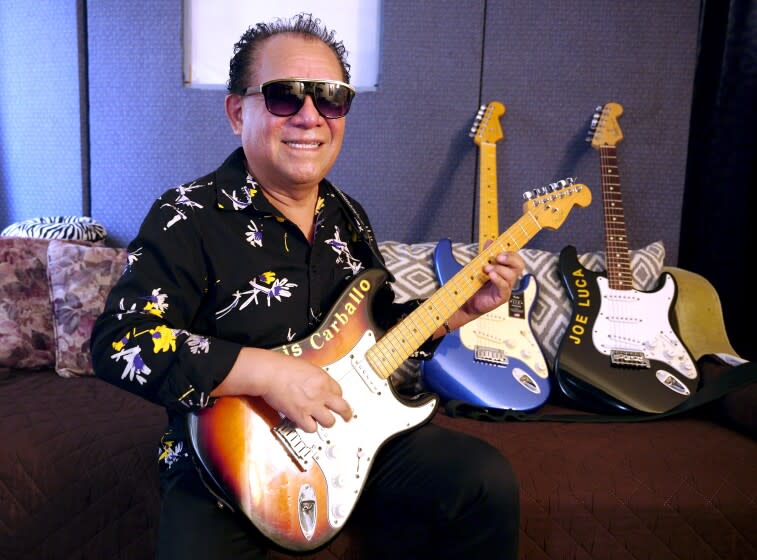
This Sunday, José Luis Carballo will be the central figure of the “Tribute to Peruvian cumbia” segment included in the Peruvian Fest Chim Pum Callao LA 2022, at LA Plaza de Cultura y Artes in downtown Los Angeles. He'll have the opportunity to show off his abilities in interpreting a variant of a genre — cumbia — of which he's an emblematic exponent.
Accompanied by seven other musicians, including Gino Gamboa — another Peruvian immigrant, known internationally as a top Afro-Peruvian percussionist and in the making of cajons — the legendary guitarist will perform signature songs like “Cariñito," “Ven mi amor,“ "Elsa” and “El arbolito."
In a multifaceted career that has drawn influences from traditional Peruvian highlands music to cumbia, pop, surfer rock and psychedelic rock, Carballo also is renowned throughout Latin America as the founder of La Nueva Crema, the mythical chicha — a very rough, "underground" style of cumbia — group that turned another musician, Lorenzo Palacios Quispe, known as Chacalón, into an idol of Peruvian popular music.
But when Carballo decided to move to Los Angeles in 1990, he knew that things were not going to be easy here, despite the fact that he had an older brother and some friends who had emigrated to the same land years before. At that time, the prejudices against chicha music had not yet been lifted. This varietal of cumbia was born among the less affluent sectors of Lima, Peru's capital; it took many years before it was accepted by the nation's economic and social elites.
Carballo left his homeland for compelling reasons. From 1985 until his departure, he belonged to the Republican Guard band. As a member, he had to wear a police uniform. In those days, that made him a potential target of the Maoist insurgency Sendero Luminoso (Shining Path), which terrorized the country throughout the 1980s and early 1990s and was met with scorched-earth reprisals by the Peruvian government.
“Three of my classmates were murdered," Carballo recalled during an interview in the small recording studio he maintains at his Huntington Park home. "One was walking and shot in the head by a woman with a little boy who suddenly took out a pistol from the bag she was carrying. Another, who was a driver, was in a Republicana truck that was blown up. And one more was murdered in Ayacucho,” a rebel stronghold at the time.
At that time, Carballo — who never takes off the black glasses that distinguish him, not even for photos — owned some modern sound equipment that he rented out for musical events organized by the generals of his institution, which gave him a respectable standard of living in a country where poverty rates remain alarmingly high. But his family was deeply concerned about the bloodshed that filled headlines every day, and that ended up giving him the conviction he needed to emigrate.
As expected, adaptingto the new environment was complicated, and initially he was also unable to make the music that had distinguished him for so many years. For starters, he had to assimilate to some of the Mexican musical and cultural influences that dominate Latin music in California.
"I had to put on my hat, belt and boots," he said. "I had to familiarize myself with the quebradita" — a Mexican regional dance style — "the music of Los Bukis and Bronco. And I even learned to play the sixth bass, which has a different tuning than the guitar."
At a certain point, after answering an advertisement for El Clasificado, the popular free weekly business and employment publication in Spanish that is still distributed in Southern California, Carballo joined a cumbiero group of Salvadorans, who were surprised to see him interpret a solo; and in the midst of these collaborations, he had the opportunity to inform the musicians who hired him that many of the compositions that they attributed to non-Peruvian artists in fact had emerged in his country. For example, "La colegiala," was written by Walter León Aguilar of Lima but became an international hit through the vocal interpretation of Colombian Rodolfo Aicardi.
“Finally, it was time to show that I could also do my songs, and that's when the gringos contacted me through my internet pages," Carballo said. Among his new contacts was Olivier Conan, the French American who leads the New York group Chicha Libre and who has released two popular Peruvian cumbia compilations (“The Roots of Chicha” and “The Roots of Chicha 2”); Money Chicha, a cumbiero combo from Austin made up of members of Grupo Fantasma and Brownout; and La Chamba, a basically Mexican American band from Los Angeles whose main source of inspiration is the Peruvian cumbia.
Carballo, who lives decently but without luxury, obtains the funds he needs by participating in other musicians' recordings, holding workshops, giving concerts and producing his own material. During the fiercest stage of the COVID-19 pandemic, when it was impossible to perform live, he dedicated himself to reviewing his generous digital archives to shape 14 new songs that he has been releasing recently, including “Ojos Chinitos," which currently has a video recorded in Puebla, Mexico, and which is credited on his official YouTube channel to Joe Luca Band (an Anglo-Saxon adaptation of Carballo's own name).
He also has a very special project on his hands, dedicated to recording chicheras versions of songs immortalized by Elvis Presley that will be performed in their original English by vocalist Carlos "El Greco." "I don't know if that will be able to enter the Peruvian market, but it is undoubtedly something very new that can 'hit' internationally, because the sound of our cumbia now has universal reach," Carballo said.
“I have always had the idea of doing something different, that would advance the genre. Fifteen years ago, I decided to re-record the old cumbias but with a brass section. And that was different because currently, in Peruvian salsa, everything is a copy; there is no innovation, and nothing happens with unpublished compositions," he emphasized.
José Luis Carballo was born 69 years ago in San Isidro, one of the wealthiest neighborhoods (if not the wealthiest) in Peru. He says that this may have happened by chance. His parents had come from the north — his mother from Piura, his father from Lambayeque — and were staying in a house located in the privileged district when Carballo was born.
“I was there until I was 6 years old. But later I appeared in La Victoria, in Mendocita, a very tough neighborhood, behind the Alianza Lima stadium," Carballo recalled. “I was scared to death. I saw some terrible fights, but I learned.
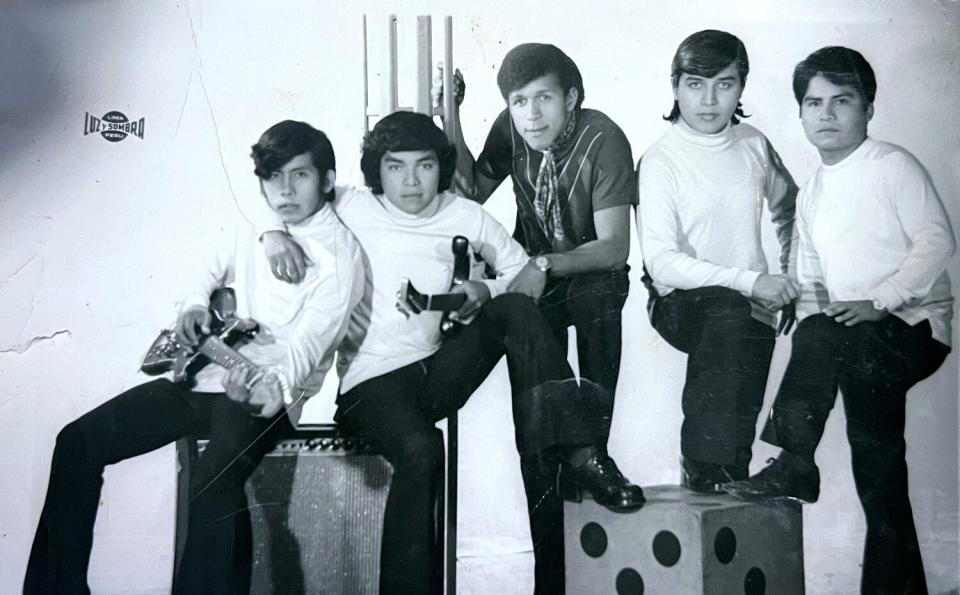
In front of his home there was a row of restaurants — which were more like chupodromes — where the Cuban melodies of La Sonora Matancera, Los Compadres and Celina y Reutilio were heard, while inside he was exposed to the marineras and the waltzes that his parents preferred.
But that was not all. "We lived in the alleys, and in the alleys, you hear everything that's going on in the other houses," he said. “Most of the people who lived there were immigrants from the mountains who went to work at 4 in the morning, and at that time they turned on the radio with folk music by artists such as Pastorita Huaracina and El Picaflor de los Andes."
Four years later, thanks to a cousin of his mother, Carballo arrived in Ciudad de Dios, a quieter but still populous area of the capital where his brother — two years older than he, who hung out with some boys from the elegant Miraflores neighborhood — introduced him to a type of rock that was rarely heard on the radio in Lima, through bands like Jimi Hendrix, Black Sabbath, Cactus, Led Zeppelin, Blind Faith and Cream.
"We had a small record player, those that used batteries, and we would take it to a clandestine cemetery that was nearby to listen to the songs and 'go crazy,' like the young people that we were," the guitarist said, alluding to smoking marijuana. "The Iron Butterfly LP that 'In-A-Gadda-Da-Vida' was on was perfect for us, because that song took up one whole side" of the album.
Motivated by these interests, and inspired by Eric Clapton's '60s band, Carballo — still a teenager — founded the New Cream, a band dedicated to playing covers of Hendrix, Zeppelin, Sabbath and Santana, among others. “We alternated in concerts with Los Pussycats, Los Truenos, Los Galax and other groups of the time that came from different districts; we were the only ones from Ciudad de Dios who did rock and ballads.
“My brother was collecting the Argentine magazine Pelo [dedicated to world and South American rock], where transcriptions of some songs sometimes came; but I didn't read music, and that frustrated me, because I got everything by ear and it didn't sound the same," added the guitarist, who at that point practiced up to eight hours a day and fell asleep with the instrument in his hands. "After finishing high school, I decided that I had to learn, and although my father did not want me to — 'if you are a musician, you are going to be a drunk, a drug addict,' he told me — my madrecita helped me fulfill those dreams."
After studying classical guitar at an institute, Carballo attended the National Conservatory of Music in Lima, where he perfected his craft. However, upon establishing a romantic relationship with a girl from his neighborhood, he realized he did not have the money to ask her out.
“In the middle of all that," Carballo went on, "at a rehearsal, a boy approached me to ask, ‘You play the guitar very well, but do you also play tropical music? If I give you some records, can you put out those songs? In two weeks I have a quinceañero, and after that many more presentations can come out, because I have a lot of relatives who have parties.'"
In this way, he was forced to discover Peruvian groups such as Los Orientales de Paramonga, Los Destellos and Los Beta 5. It was then that he decided to leave the plastic pick that he used in his beginnings to start playing the guitar with his fingers, which he does to this day, as the long fingernails on his right hand make clear.
“Actually, using the fingers came from before, because there were many things that I couldn't do with the pick, like fast arpeggios. But it took hold when I started to learn classical guitar," he elaborated. “I have to put acrylic on my nails so they don't break. There are other [Peruvian cumbia] musicians who also play with their fingers, but it is because they started in Creole music.”
After establishing a fruitful collaboration with Argentine-born record executive Enrique Lynch, Carballo began to record more and more songs, usually alongside conga player Alberto "Papita" Hinostroza, bassist Alberto “Piraña" Novoa, timbalero Ricardo "Kibe" Valles and the percussionist Óscar “Chino” Siu, who collectively received the name of “La Mafia” for forming a foremost session team of cumbia recordings in the capital. At that time, he also began to work with Alfonso "Chacal" Escalante, the older brother of Chacalón, who was also a singer.
One of those days, Carballo was intercepted at the exit of a recording studio by Ángel Aníbal Rosado, who had already become widely known as a composer of Creole and Afro-Peruvian music but who wanted to try his luck in the profitable field of cumbia, a genre he had ventured into with a theme that had gone practically unnoticed.
"He told me that he was going to try it one more time with a new song of his; later, he took out his guitar, began to play it and began to sing, 'I cry, for loving you, for loving you,'" Carballo said, referring to the first phrases of “Cariñito,” one of the most renowned cumbias of all time. “‘It’s good,’ I told him, 'but it has no introduction or arrangements.' 'That's why I need you,'" he replied.
When the song was ready, Rosado summoned Carballo and his usual accompanists (Hinostroza, Novoa, Valles and Siu) and added up to six singers — including three female backup singers — so that the sound reached epic dimensions. Together with them, in just two takes, he gave life to a piece that would leave its mark on the history of Latin American music.
“When we heard the result on the studio's eight-channel console, our jaws dropped,” Carballo said. “That's where the idea of making the group came from; but I did not know that this topic was going to transcend so much, because I still had no idea what made something successful."
The group from Lima was called Los Hijos del Sol, and with "Cariñito" it became immensely popular — not immediately in Lima — which didn't embrace it until much later — but in the provinces. “Over there, record sales were enormous and we didn't stop having contracts,” explained Carballo. “We were going constantly for almost three years, by plane — which did not happen at that time — and sometimes they received us with a limousine. At dances, we sometimes had to play ‘Cariñito’ up to 15 times because people kept asking for it.”
When the guitarist met Lorenzo Palacios Quispe (a.k.a. Chacalón), Chacalón had dedicated himself to playing the congas, despite the fact that he had been a singer with the renowned Celeste Group — although neither his name nor any photo of him appeared on the album.
This particularly complicated things for the project that Carballo decided to undertake with Chacalón after spending countless nights by his side in a seedy club where they sometimes performed from 9 at night until 6 in the morning, suffused with the blinding smoke of other people's cigarettes. These very long and exhausting sessions took place during the weekdays because, on weekends , Carballo went to the provinces to perform with Los Hijos del Sol.
“In addition, [in the meetings with the executives], Chacalón did not say anything; he did not know how to express himself well," Carballo said. “At that time, he was poor, poor. He lived with his whole family — they were about 18 — in two little rooms. Sometimes I came to his house in the mornings and took him to the fishing terminal to buy fish, and with that they all fed themselves.”
Usually only wheelbarrows passed through that street, so, on one of his visits, Carballo was surprised to see a modern car parked in front that belonged to Juan Luis Campos Muñoz, an employee of the Infopesa record company, which has been responsible for releasing some of the most famous albums of Peruvian cumbia since the early '70s.
Campos asked the guitarist to call over Chacalón — who was playing soccer at the time on a nearby field — and after inviting the two to a crowded chifa (Peruvian-Chinese food restaurant), he presented his plan of action: He wanted not only to form a musical group with them but also to create a new label in which Carballo would serve as producer.
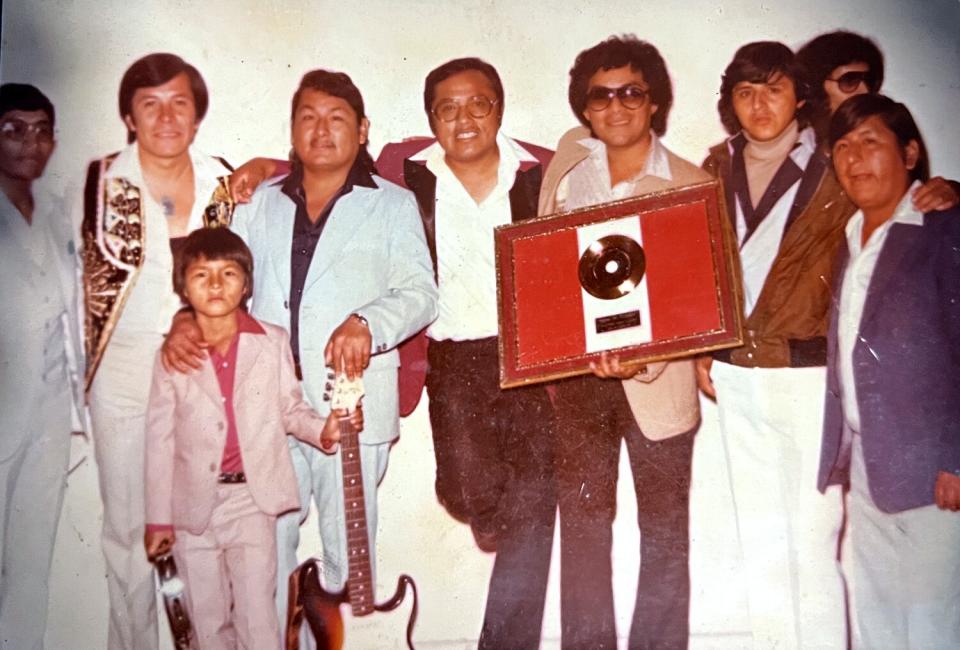
The first song that the guitarist took to the Discos Horóscopos studio (the new label) was “Ven mi amor," which would later become a classic and which, at first, was received with skepticism by Campos. “‘He has a kind of rock style; you've put distortion on it,' he told me. And I told him, 'Yes, because I wanted to do something different,'” recalled Carballo. “In fact, the night he told me that he was going to have the group and be the producer of the label, I could hardly sleep because I thought that if I simply imitated Los Pakines and Los Destellos, I was not going to have an own identity," he continued, referring to two prominent Peruvian cumbia groups.
“And if I put distortion on it, even when the singer intervenes? What if I put a very tasty mambito on it, with a nice introduction in which the guitar is first clean and then enters with fuzztone?" Carballo wondered, thinking of his use of the distortion pedal that is one of his six-string trademarks. “At that time that effect had already been used, in Los Destellos, Los Girasoles and a couple of other groups; but the fuzztone that they used tried to imitate the trombone, without the background that I put on it and its application in the solos."
Carballo's decision was fundamental in the creation of chicha.
“The other groups imitated the Cubans, the guaracha, but I liked having a Lima neighborhood identity, which meant that everything had to be merged, because in the same neighborhood you knew people who liked rock, cumbia and folk music. In my compositions there are 'breaks' of salsa, rock and even classical music."
Initially, the name of La Nueva Crema, the New Cream, was tentative. But once the impresario informed Carballo that he had placed it on the labels of the first 45 rpm records (launched in 1977) there was no going back. This was apparently not to the liking of Chacalón, who had other ideas. But, later on, when Carballo no longer played with him, he ended up changing the name to Chacalón y la Nueva Crema.
The relationship between the two founders of the emblematic group, in which Hinostroza, Novoa, Valles and Siu originally recorded, was not exactly easy. Carballo feels that Chacalón only came to recognize what Carballo had done for him near the end of his life. Chacalón died in 1994 at age 44.
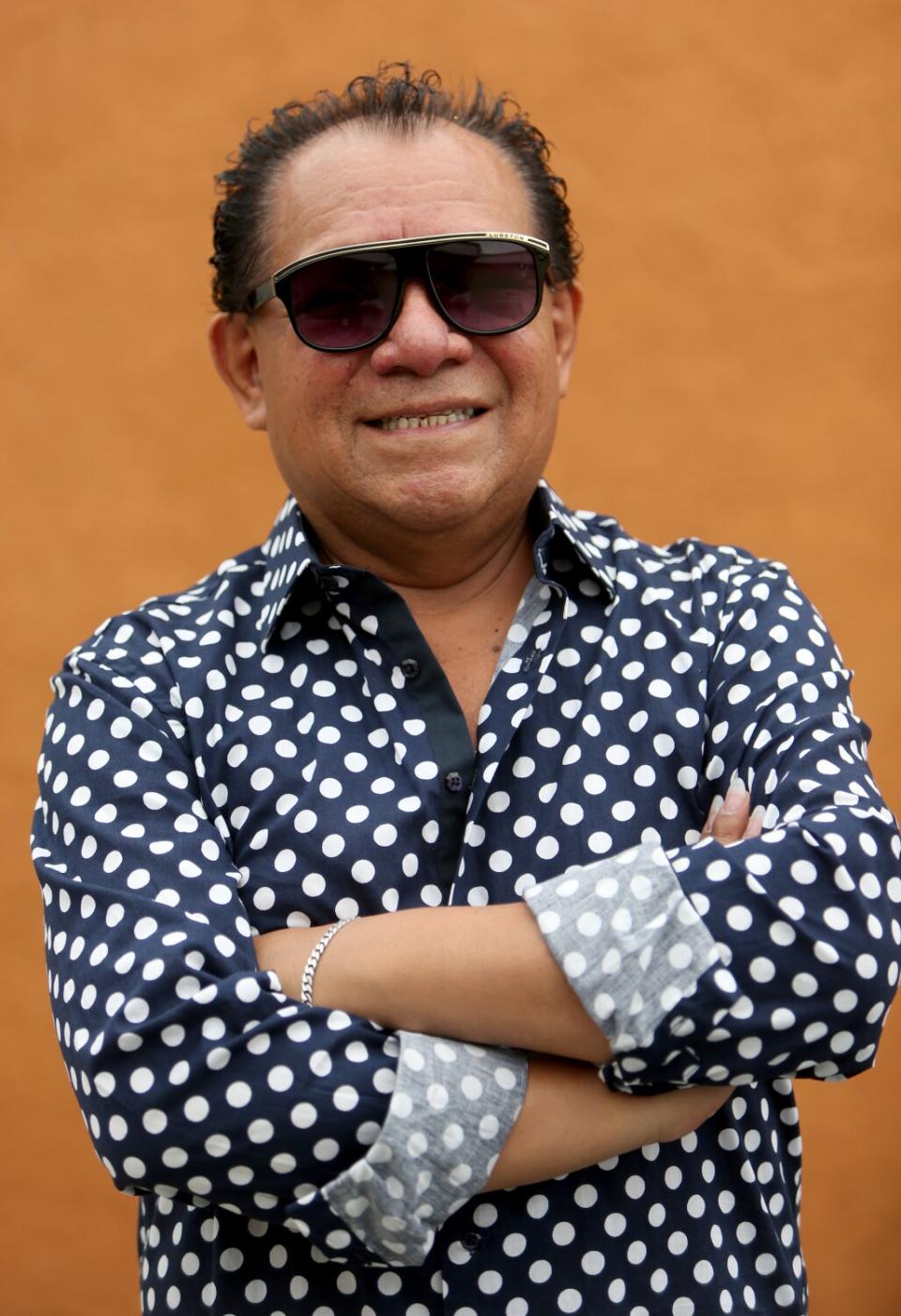
"Campos had taken about five dances in the Norte Chico [in Lima], and he told me that I had to go no matter what, even if it was with the chibolos," Carballo recalled. “After being in those for about four months, we met again, and Chacalón, who refused to part with the guitarist he had, looked at me and said: 'Lastly, come in playing a Cuban tres, so you can put some sauce.' That was the straw that broke the camel's back."
Carballo did not play with Chacalón on stage again, but he did record with him and even composed new songs for him. He felt pressured by economic need and by the good monetary agreement he'd reached with Campos, who had granted him the opportunity to have his own group, La Mermelada, in which he sang “Chacal” and which followed the same line as La Nueva Crema — all of which created more confusion among fans.
“At that time, I composed like crazy. I did four more for Chacalón and, reluctantly, he had to rehearse with me and be directed by me while he recorded. That is why in the first long play album [by Chacalón and La Nueva Crema] there are six of my songs."
No longer having Carballo in their ranks, La Nueva Crema — and, more precisely, Chacalón, with whom thousands and thousands of immigrants from the Andean regions identified — became increasingly popular, until reaching levels of devotion that, in this case, had its epicenter in Lima. Carballo insists that the fame obtained by the group that he himself founded did not bother him.
“I had done everything, I could continue doing it and I did it with La Mermelada, where I had the same musicians [who recorded at La Nueva Crema] and the brother of Chacalón, who had a very similar voice but better,” he said. “We were highly sought after in the Norte Chico, and one day, we knocked down a tono [party] of Los Pakines, who were extremely well known; the same organizers of that event ended up at ours.”
Eventually, an unsuspecting businessman tried to unite Chacalón and La Nueva Crema with La Mermelada in the same auditorium in downtown Lima, but according to Carballo, Chacalón did not show up, due to the desperation of the promoter and the complaints of those present. “Later I found out that he stayed at his house; he did not want to be embarrassed by having to share the stage with the founder of his group,” Carballo said. Despite everything said, the two artists met again on more than one occasion and even recorded together again.
When Chacalón died from diabetes complications , more than 70,000 people attended his funeral in the El Ángel cemetery. Nearly a decade still had to pass before the Peruvian cumbia and to a lesser extent the chicha gained acceptance from the Andean nation's upper classes.
The term "chicha" originally had negative connotations, so the groups that supposedly practiced it refused to use it. “It was used for everything negative, and not only in music; it represented something informal, poorly done, ugly,” Carballo said. “It was OK to be called a rocker or a salsero; but "chichero"? However, over time, its meaning has changed. Alberto Maraví, [the founder] of Infopesa, even released a label that was called that, Chicha."
Carballo said that the negative use of the word came from the media.
“They had to blame everything bad on the popular classes, because the people from the neighborhood couldn't protest,” he said. “I have gone to salsa dances [in Lima] where there were shootouts and lawsuits, and at rock concerts there were pure fumaredas. Also at ours, of course, but not exclusively, nor did we deserve to have it said that only prostitutes and thieves attended our events.
"The bad reputation was also given because the internet did not exist, and people, for example, did not know that I had studied classical guitar," he added. “When I arrived in the United States, the musicians of a Peruvian friend's salsa orchestra were amazed when they realized what I could do. ‘Oh, do you write music?,’ they asked me.”
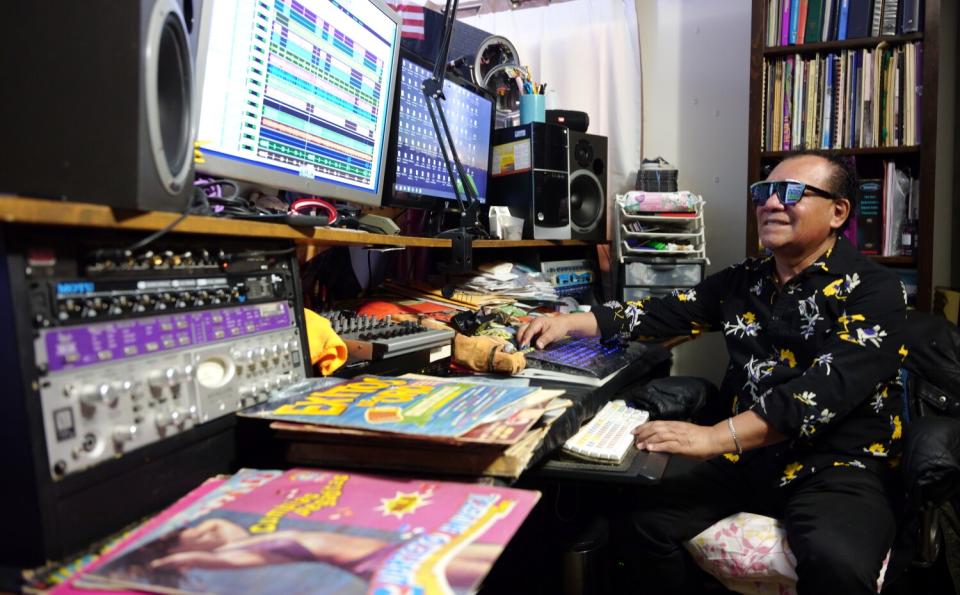
Carballo is fully aware that the current enthusiasm of many non-Peruvian people for the country's cumbia has come hand in hand with a level of confusion that, for example, makes many of them think that the term "chicha" encompasses everything that has been done within the genre in the South American country, when, for example, Juaneco y su Combo — one of the most celebrated ensembles — performed Amazonian cumbia.
It should also be noted that, at the beginning of the '90s, there began to appear numerous representatives of tecnocumbia — a variant that emerged in Mexico, probably under the influence of Selena, that favors synthesizers and shameless flirtations with pop and for which radio stations generously opened their doors.
“Why have six singers up front? That is already pure spectacle," Carballo said, when asked about the phenomenon, led these days by groups such as Grupo 5 and the Yaipén Brothers. "It's something more modern, but it doesn't have any innovation either, because what they mostly do is imitate Mexican groups like Los Angeles Azules."
“When I talk to Olivier Conan or the people from Money Chicha, with whom I have worked many times, they tell me that my music feels like something hybrid, that they don't really know what it is,” Carballo said.
“I think it's the result of everything I heard growing up, including groups from the mountains" that fused rock with Andean music, "like Trébol, who were from Cusco; the Siderals, from Ayacucho; the Datsuns, from Huancayo, and the Texao, from Arequipa.
"In Peru we have three very marked regions, each with its own music. But in the neighborhoods where I grew up, everything was mixed.”
This story originally appeared in Los Angeles Times.

